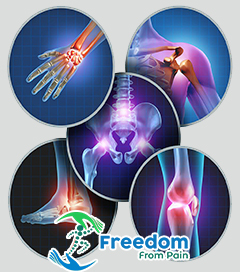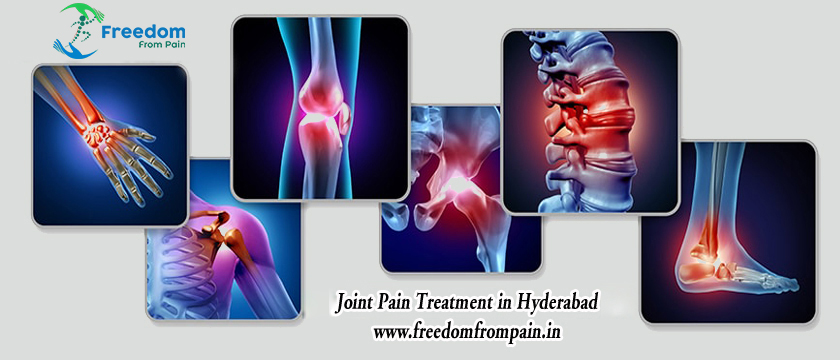Joints form the connections between bones. They provide support and help you move. Any damage to the joints from disease or injury can interfere with your movement and cause a lot of pain. Joint pain can range from mildly irritating to debilitating. It may go away after a few weeks (acute), or last for several weeks or months (chronic). Even short-term pain and swelling in the joints can affect your quality of life.
Joint pain occurs in the most commonly used joints such as Knee Joints, Shoulder Joints, Hips, Elbow Joints, Wrist Joints, Ankle Joint etc.

Symptoms of joint pain :
The most common symptoms of determining joint pain are:
- Joint swelling
- Joint redness
- Stiffness
- Weakness
- Joint tenderness
- Loss of range of motion of the joint
Causes of joint pain :
Joint pain is usually caused as a result of an injury or sickness. Arthritis is one of the most common causes for joint pain. Joint pain can occur depending on other conditions or factors such as
- Arthritis
It is the main cause of joint pain. Arthritis is of two kinds, namely:- Rheumatoid Arthritis(RA)
It is a chronic inflammatory disorder where the immune system (the body’s defense system) does not work properly. It causes pain and swelling in the wrist and small joints of the hand and feet - Osteoarthritis(OA)
It is a common form of arthritis where the protective cartilage that cushions the ends of your bones wears down over time. Although OA can damage any joint, it occurs mainly in the hand, knees, hip and spine joints
- Rheumatoid Arthritis(RA)
- Bursitis
There are small, fluid-filled sacs called bursae present in the body that cushion the bones, tendons, and muscles near your joints. Bursitis is a condition where the bursae get inflamed and are very painful. The most common locations where bursitis - Gout
Gout is a form of arthritis that is characterized by sudden, severe attacks of pain, swelling, redness, and tenderness in the joints, often the joint at the base of the big toe. The symptoms are due to the formation of uric acid crystals in the joints and the body’s response to them - Bone or joint infection
Osteomyelitis is the infection of the bone. The bacteria called Staphylococcus aureus causes bone and joint infections. They damage the growth plates, bones and joints and require to be treated by antibiotics. It also causes chronic arthritis and bone fractures - Cancer
If someone suffers from cancer or has overcome it, they will experience joint pain as a side effect. Cancer makes the body’s immune system weak. This causes weakness in different parts of the body and causes joint pain as well - Injury
Injuries suffered due to sports, activities or accidents could also result in joint pains. Unattended injuries can also cause joint pains in the future - Osteoporosis
Osteoporosis means “porous bones”. It is a kind of bone disease in which the body makes too little bone, loses too much bone or does both. It causes the bones to be soo weak that the bones break from sneezing or minor bumping - Joint overuse
Micro-Trauma or joint overuse is caused due to overuse of joints, muscles, tendons, and ligaments. It causes swelling that you cannot feel to touch or see but can feel the stiffness, tightness or discomfort - Tendinitis
Tendons are the thick fibrous cords that attach the muscle to the bone. When there is an inflammation or irritation in a tendon, it is called a tendinitis. Tendinitis causes pain and tenderness just outside the joint. Tendinitis can occur in any of your tendons but is most common around the shoulders, wrists, knees, and heels.



